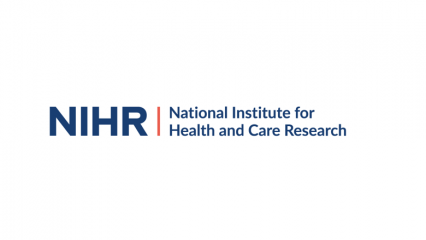Professor Rick Body’s top 10 tips for communicating your research
My role at CMFT is as a doctor, a researcher, and a communicator. The more we share best practice and new ideas, the more impact our research can have on patient care. Raising awareness of clinical trials can aid recruitment and lead to funding and further opportunities by building the reputation of researcher and Trust.
But the impact of sharing your results depends largely on how you communicate them. We all aim to publish in journals and present to our peers at conference, but by limiting ourselves to this we run the risk that we only ever reach other researchers. Clinicians are extremely busy and may find it difficult to keep on top of new publications, while the public – who have a right to know what is happening in clinical research – could be locked out of the conversation entirely.
So how do you engage a wider audience? Here are my top ten tips:
- Tell the press
Not all medical research stories will get in the press, but your communications department will be able to advise on which have the best chance and work with you to write and distribute a press release. Make sure you set aside some time to talk to journalists and appear on radio or TV if you think your story might make a splash.
- Focus on patients
Demonstrate how patients have benefited from your research by asking a participant with great outcomes if they would be happy to be involved in promotion. Your communications team may work with them to tell their story through a range of mediums, such as posters, social media and press work. A personal story like this makes clinical research more relatable to a lay audience and encourages other patients to get involved.
- Use social media
Social media – particularly Twitter – is a great way to get messages across and engage your peers and the public in a two-way dialogue. Having the facility to discuss your work and answer questions is really important for engagement and can create long-lasting relationships. Look out for Twitter networks and campaigns you can join, such as #WhyWeDoResearch or – for my colleagues in emergency medicine – #FOAMed.
- Blog
My colleague Professor Simon Carley and I set up the St Emlyn’s blog on emergency medicine in 2012. The site attracts a really wide range of people, from members of the public to our peers across the world and gets about 1,500 visitors per month.
Blogs allow you to discuss topics in more detail than on Twitter, where both you and those you engage with are constrained by the 140-character limit. Make sure you open the comments so visitors can get in touch! By doing this, you can receive a constant peer review of your work and build new relationships.
Lastly, it’s important to know your audience and tailor your content to them. St Emlyn’s is aimed at emergency medicine clinicians and researchers, so we do not only blog about new findings, we also publish tips for doctors that range from best practice when dealing with certain emergencies to advice on managing the stress of the job.
- Podcast
We did the first ever St Emlyn’s podcast on emergency medicine in 2011 and now release it regularly. Our listeners tell us that it’s convenient for them to access while they are driving to work or out and about, which means you don’t have to rely on your audience having a moment to sit down and dedicate their time to reading your material.
- Use videos and animation
Dynamic content like videos and animation can be really engaging, particularly if you involve a patient to tell their story. Keep videos short and focus on the patient’s journey – the impact of your research is in their personal experience and that is the aspect your audience will relate to most. Videos and animation can be released on the internet, but they can also be used at conference to make a more engaging presentation than the dreaded “death by PowerPoint”.
- Create networks
The internet provides us with the perfect opportunity to network with people we would not otherwise meet, which makes it a fertile ground for peer communities to share best practice, educational resources and research findings. I am particularly involved in the FOAMed community, which is a free access platform for sharing educational resources and new findings.
- Meet people
The NHS provides a number of ways to meet with engaged patients and talk them through your research. Service-user groups and public and patient involvement/engagement groups often have a strong interest in research, innovation, and the development of new healthcare programmes. But the benefit goes two ways: lay representatives can often offer invaluable insight into the impact of service modifications on the patient population. Getting feedback from these groups in the research design phase can also help you recruit and retain participants by increasing the convenience, comfort and relevance of studies to the patient.
- Don’t just talk about your work
Regardless of which platform you use, don’t just talk about your work. Communication is a two-way process, so make sure you listen too. Take the time to see what others are posting on social media, make sure you’re reading the latest publications in your field, and discuss those materials as well as your own. It’s a way you can join the discussion, deepen your knowledge, and create new relationships.
- Tell stories
Following characters on a journey through storytelling is a primal part of our culture and for good reason: it’s engaging; emotionally, it keeps you hooked. One way I like to use storytelling techniques is by beginning presentations with anecdote about a time my father experienced chest pains. After I my talk, I complete the story to let the audience know he pulled through. I’ve had great feedback about this technique, as it reconnects those in medicine to the benefits of their work to patients and their families and reminds them why we do what we do.




